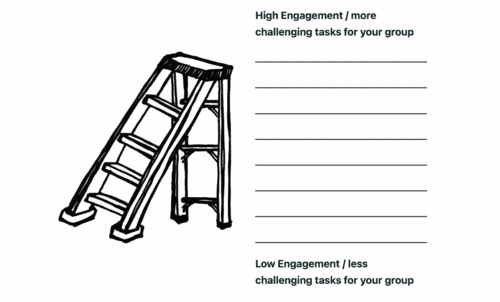Mobilizing and activating members: recruitment and retention 101
The following resource was compiled using existing organizer databases and resources by movement thinkers on mobilizing new members, and using thoughts from grassroots organizers within the hub's community of practice. This guide was developed in response to request from grassroots groups asking for tips on growing their membership, that is, on effective recruitment and retention strategies.
Learning circle participants shared the following ideas related to recruitment and retention:
- Using Divest McGill as an example, take over a space for recruitment! We took over space on campus for 3 days, so lots of community building and recruitment was achieved.
- Divest McGill made a document to inform incoming members of who the board of directors (the targets) for their campaign were, complete with their names, photos and info on each. Helps new members plug in.
- Using divest McGill as an example, take your time. Do not organize a meeting too soon after sending a message (allow people to free up their time). Mention an understanding for the lack of time of those who commit.
- In my group at university, we had the privilege of having a garden on campus. This was a big plus for students who wanted to come out and join us in the garden. An outdoor space helps with recruitment!
- In some schools, a bootcamp (3 day online intensive) to get people up to speed on information, and bring the information to new people, is helpful. The important thing is to keep the relationships!
Modelling strategies using the ladder of engagement [1]
The ladder of engagement can be a helpful tool for describing how folks who are not involved in your group can become engaged, whilst also considering how they can increase their engagement towards becoming more active members. Someone who is a “1,” or at the bottom of the ladder in the model has no connection to your campaign or issue, and a “5” is someone who is ready to show up at an action.
The ladder can be modelled by listing different ways people can take action, in order from lowest engagement required to high engagement. For example, watching a social media video to educate themselves on the issue would be a low engagement action. Moving up the ladder might look like following up with signing a petition. Actions can escalate in intensity and/or demand or requirements of the individual as they move up the ladder and become more active. For example, an action that's higher on your ladder of engagement might be facilitating a team meeting, or organizing a road blockade.
Of course, this is just an outline. Some people might be more willing to participate in an action that make phone calls. The idea, however, is to paint a picture of which actions have the fewest barriers to entry, that can encourage folks to get more involved as active members.

Image by: 350.org